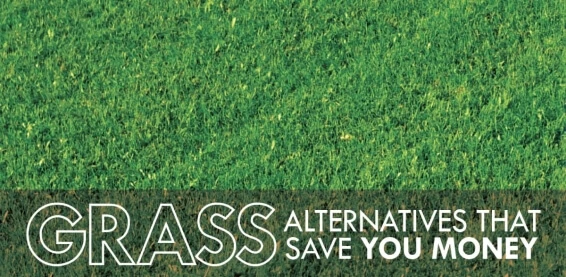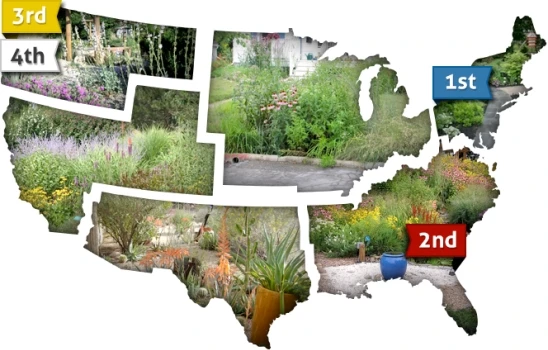Low Water Landscaping Around the US

Far too many homeowners plant gardens that aren’t ideal for their region. It’s an easy mistake to make, especially if you put achieving a certain look above water conservation. What you need is low water landscaping ideal for your region. Follow these guidelines to help you maintain a healthy lawn and garden based on where you live in the United States, and check out the Water Sense Water Smart Landscape Photo Gallery to explore water saving landscapes in your area.

Low Water Landscaping for the Northwestern US
While Kentucky bluegrass grows well here, a no-turf landscape and low-maintenance, drought-tolerant plants are best for the northwestern region. Specific plants that thrive here include lavender, Lydia broom, goldenrain tree, David viburnum and allium. Mulch slows runoff, allowing for better rain penetration and healthier plants. Apply mulch each winter to inhibit weeds, moderate the soil temperature and prevent erosion for a healthier garden in spring.
Low Water Landscaping for the Southwestern US
The southwestern states are generally dry and hot in the summer, though buffalo and Bermuda grass do quite well. Drought-tolerant plants such as dwarf heather, cotoneaster, veronica hebe and pink jasmine are a must if you want your garden to survive the dry weather that is bound to come. Mulch is also beneficial since it helps the soil retain moisture. Drip irrigation systems are useful for saving water compared to conventional sprinkler systems.
Low Water Landscaping for the Southern US
For homes in Arizona, grass is the most water-guzzling landscape you could choose. Opt for decomposed granite, decorative boulders, native drought-tolerant plants and an efficient irrigation system to keep your garden looking fantastic. Further east where the humidity level is higher, you should choose native grasses, shrubs and trees to flesh out your landscape. These include Bermuda and buffalo grass, little bluestem, Texas lantana, goldenrod, Texas gold columbine, and lambs ear.
Low Water Landscaping for the Midwestern US
Grass tends to stay greener on its own in the Midwest because rain is much more prevalent here than in the south, allowing for tall fescue and fine-leaf fescue grass to grow particularly well. Still, by planting ground cover, flowers and shrubs native to the area, you decrease labor costs, water consumption, mowing requirements, and the need to apply fertilizer and herbicides. Native plants include asters, golden Alexander, Indian grass, bergamot and prairie seed. Whenever possible, use stormwater runoff to meet your garden’s watering needs.
Low Water Landscaping for the Southeastern US
Grasses such as Zoysia, St. Augustine and Bermuda grow well here, but many more exotic plants thrive in the southeast’s year-round hot, humid climate and sandy soil. These include cycads, azaleas, camellias, flowering trees and tropical bulbs. To help your plants thrive, consider planting vegetation in groups based on their watering needs. That way, you can water your landscape more precisely and reduce water waste. In addition to beautifying your landscape, water features also help collect and distribute stormwater runoff.
Low Water Landscaping for the Northeastern US
Plants such as salvia, diablo ninebark, Russian sage, barberry and flowering quince thrive in the northeastern sunlight. Tall fescue, perennial ryegrass, fine-leaf fescue, Zoysia and Kentucky bluegrass also grow well here. Add mulch to reduce evaporation and you have a garden that requires very little supplemental water even during the summer. Stone borders and composted soil also help reduce how much you need to water your garden.
In the end, your best bet is to choose drought-tolerant plants native to your region and include the low-water features that work best for your property. Thanks for trusting The Grounds Guys® to help you achieve the perfect yard, no matter which region you live in.
 Click to call
Click to call


